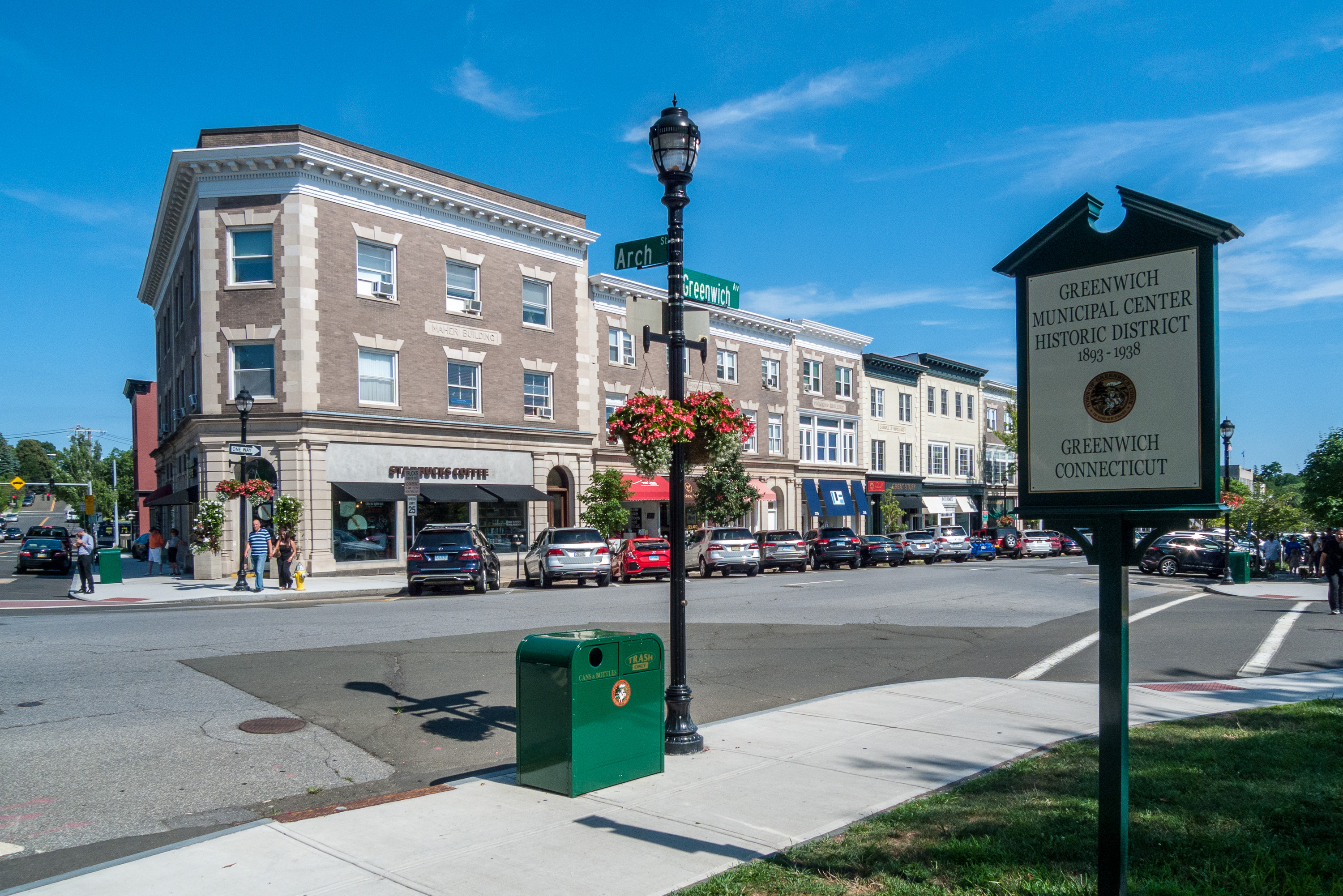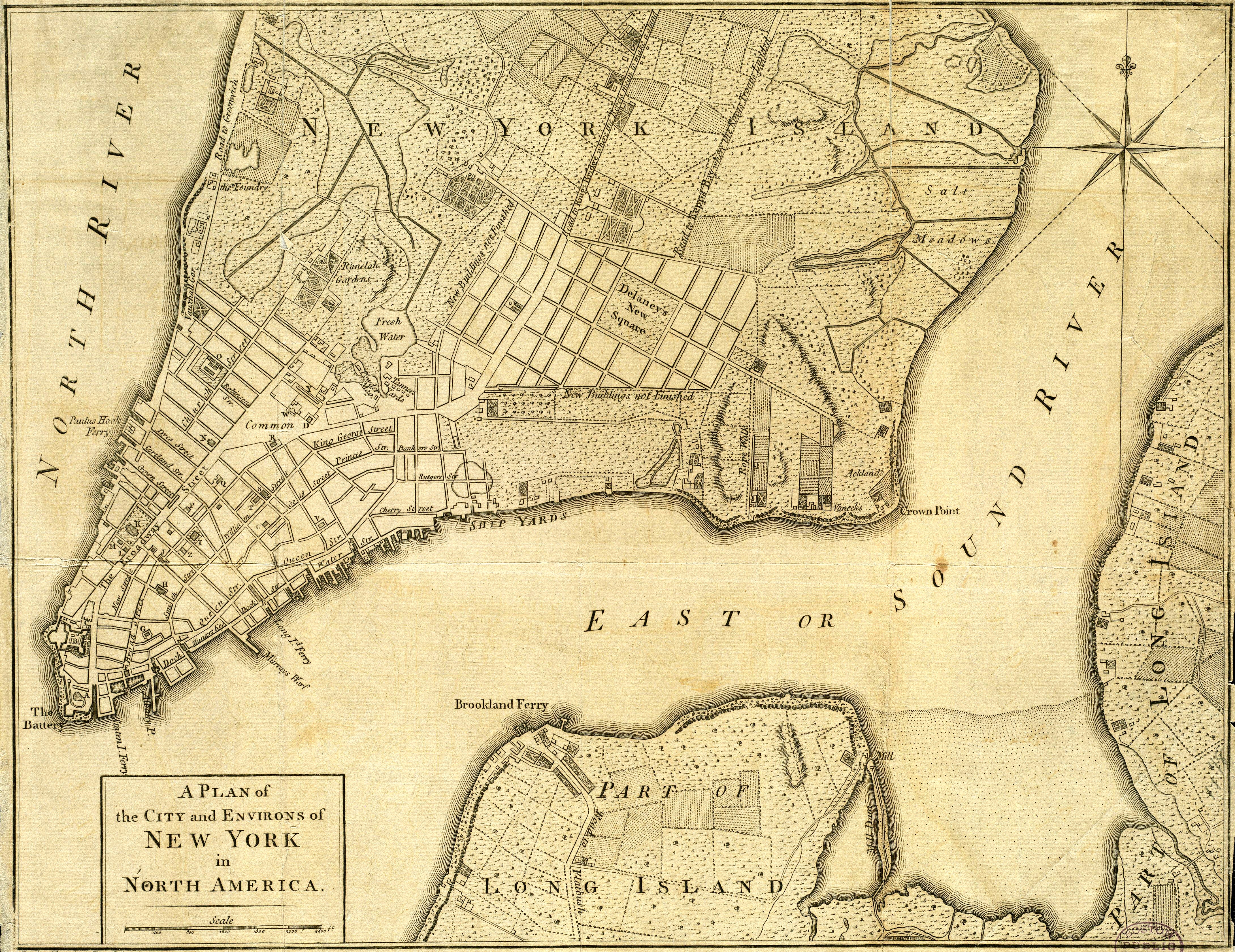|
Fourth Ward Historic District (Greenwich, Connecticut)
The Fourth Ward Historic District encompasses an early urban residential subdivision of Greenwich, Connecticut. Extending north from United States Route 1 along Sherwood Place, Church Street, and adjacent streets, it is one of two subdivisions created before the arrival of the railroad in Greenwich in 1848. It is characterized by dense residential construction, with architectural styles from the Greek Revival to early 20th-century styles. The district was listed on the National Register of Historic Places in 2000. Description and history The Fourth Ward area is located near an early commercial district in Greenwich, that arose along the Boston Post Road (now US 1) during its period as an important stagecoach and travel route. It was developed in 1836 by William Sherwood as an area of moderate-income housing, a contrast to the higher-style upper-class housing that then lined the Post Road. Lots were laid out with narrow frontage, and the early houses that were built there we ... [...More Info...] [...Related Items...] OR: [Wikipedia] [Google] [Baidu] |
Greenwich, Connecticut
Greenwich (, ) is a New England town, town in southwestern Fairfield County, Connecticut, United States. At the 2020 United States Census, 2020 census, the town had a total population of 63,518. The largest town on Connecticut's Gold Coast (Connecticut), Gold Coast, Greenwich is home to many hedge funds and other financial services firms. Greenwich is a principal community of the Greater Bridgeport, Bridgeport–Stamford–Norwalk–Danbury metropolitan statistical area, which comprises all of Fairfield County. Greenwich is the southernmost and westernmost municipality in Connecticut as well as in the six-state region of New England. The town is named after Greenwich, a List of place names with royal patronage in the United Kingdom, royal borough of London in the United Kingdom. History The town of Greenwich was settled in 1640, by the agents Robert Feake and Captain Daniel Patrick, for Theophilus Eaton, Governor Theophilus Eaton of New Haven Colony, who purchased the land from ... [...More Info...] [...Related Items...] OR: [Wikipedia] [Google] [Baidu] |
United States Route 1
U.S. Route 1 or U.S. Highway 1 (US 1) is a major north–south United States Numbered Highway that serves the East Coast of the United States. It runs from Key West, Florida, north to Fort Kent, Maine, at the Canadian border, making it the longest north–south road in the United States. US 1 is generally paralleled by Interstate 95 (I-95), though US 1 is significantly farther west (inland) between Jacksonville, Florida, and Petersburg, Virginia, while I-95 is closer to the coastline. In contrast, US 1 in Maine is much closer to the coast than I-95, which runs farther inland than US 1. The route connects most of the major cities of the East Coast—including Miami, Jacksonville, Raleigh, Richmond, Washington, D.C., Baltimore, Philadelphia, New York City, and Boston passing from the Southeastern United States to New England. While US 1 is generally the easternmost of the main north–south U.S. Highways, parts of several others occupy corridors closer to the o ... [...More Info...] [...Related Items...] OR: [Wikipedia] [Google] [Baidu] |
National Register Of Historic Places
The National Register of Historic Places (NRHP) is the United States federal government's official list of districts, sites, buildings, structures and objects deemed worthy of preservation for their historical significance or "great artistic value". A property listed in the National Register, or located within a National Register Historic District, may qualify for tax incentives derived from the total value of expenses incurred in preserving the property. The passage of the National Historic Preservation Act (NHPA) in 1966 established the National Register and the process for adding properties to it. Of the more than one and a half million properties on the National Register, 95,000 are listed individually. The remainder are contributing resources within historic districts. For most of its history, the National Register has been administered by the National Park Service (NPS), an agency within the U.S. Department of the Interior. Its goals are to help property owners and inte ... [...More Info...] [...Related Items...] OR: [Wikipedia] [Google] [Baidu] |
Boston Post Road
The Boston Post Road was a system of mail-delivery routes between New York City and Boston, Massachusetts that evolved into one of the first major highways in the United States. The three major alignments were the Lower Post Road (now U.S. Route 1 (US 1) along the shore via Providence, Rhode Island), the Upper Post Road (now US 5 and US 20 from New Haven, Connecticut by way of Springfield, Massachusetts), and the Middle Post Road (which diverged from the Upper Road in Hartford, Connecticut and ran northeastward to Boston via Pomfret, Connecticut). In some towns, the area near the Boston Post Road has been placed on the National Register of Historic Places, since it was often the first road in the area, and some buildings of historical significance were built along it. The Boston Post Road Historic District, including part of the road in Rye, New York, has been designated a National Historic Landmark. The Post Road is also famous for milestones that da ... [...More Info...] [...Related Items...] OR: [Wikipedia] [Google] [Baidu] |
Contributing Buildings
In the law regulating historic districts in the United States, a contributing property or contributing resource is any building, object, or structure which adds to the historical integrity or architectural qualities that make the historic district significant. Government agencies, at the state, national, and local level in the United States, have differing definitions of what constitutes a contributing property but there are common characteristics. Local laws often regulate the changes that can be made to contributing structures within designated historic districts. The first local ordinances dealing with the alteration of buildings within historic districts was passed in Charleston, South Carolina in 1931. Properties within a historic district fall into one of two types of property: contributing and non-contributing. A contributing property, such as a 19th-century mansion, helps make a historic district historic, while a non-contributing property, such as a modern medical clinic, ... [...More Info...] [...Related Items...] OR: [Wikipedia] [Google] [Baidu] |
Greek Revival Architecture
The Greek Revival was an architectural movement which began in the middle of the 18th century but which particularly flourished in the late 18th and early 19th centuries, predominantly in northern Europe and the United States and Canada, but also in Greece itself following independence in 1832. It revived many aspects of the forms and styles of ancient Greek architecture, in particular the Greek temple, with varying degrees of thoroughness and consistency. A product of Hellenism, it may be looked upon as the last phase in the development of Neoclassical architecture, which had for long mainly drawn from Roman architecture. The term was first used by Charles Robert Cockerell in a lecture he gave as Professor of Architecture to the Royal Academy of Arts, London in 1842. With a newfound access to Greece and Turkey, or initially to the books produced by the few who had visited the sites, archaeologist-architects of the period studied the Doric and Ionic orders. Despite its univ ... [...More Info...] [...Related Items...] OR: [Wikipedia] [Google] [Baidu] |
National Register Of Historic Places Listings In Greenwich, Connecticut
This is a list of the National Register of Historic Places listings in Greenwich, Connecticut. This is intended to be a complete list of the properties and districts on the National Register of Historic Places in Greenwich. The locations of National Register properties and districts for which the latitude and longitude coordinates are included below, may be seen in an online map. There are 295 properties and districts listed on the National Register in Fairfield County. This list covers the 35 properties located partially or entirely in Greenwich. Ones in Bridgeport or Stamford are covered in National Register of Historic Places listings in Bridgeport, Connecticut, or in National Register of Historic Places listings in Stamford, Connecticut. The remainder are covered in National Register of Historic Places listings in Fairfield County, Connecticut. Current listings See also *National Register of Historic Places listings in Fairfield Coun ... [...More Info...] [...Related Items...] OR: [Wikipedia] [Google] [Baidu] |
National Register Of Historic Places In Fairfield County, Connecticut
__NOTOC__ This is intended to be a complete list of the properties and districts on the National Register of Historic Places in Fairfield County, Connecticut, United States. The locations of National Register properties and districts for which the latitude and longitude coordinates are included below may be seen in an online map. There are 293 properties and districts listed on the National Register in the county, including 9 National Historic Landmarks. Of these, 55 are located in the city of Bridgeport and covered separately in National Register of Historic Places listings in Bridgeport, Connecticut. Thirty-four are covered in National Register of Historic Places listings in Greenwich, Connecticut and another 34 are covered in National Register of Historic Places listings in Stamford, Connecticut. There are 171 properties and districts which are entirely outside those three cities or which span outside, and which are covered here in this list (Merritt Parkway is listed here as ... [...More Info...] [...Related Items...] OR: [Wikipedia] [Google] [Baidu] |
Historic Districts In Fairfield County, Connecticut
History (derived ) is the systematic study and the documentation of the human activity. The time period of event before the invention of writing systems is considered prehistory. "History" is an umbrella term comprising past events as well as the memory, discovery, collection, organization, presentation, and interpretation of these events. Historians seek knowledge of the past using historical sources such as written documents, oral accounts, art and material artifacts, and ecological markers. History is not complete and still has debatable mysteries. History is also an academic discipline which uses narrative to describe, examine, question, and analyze past events, and investigate their patterns of cause and effect. Historians often debate which narrative best explains an event, as well as the significance of different causes and effects. Historians also debate the nature of history as an end in itself, as well as its usefulness to give perspective on the problems of the p ... [...More Info...] [...Related Items...] OR: [Wikipedia] [Google] [Baidu] |




.jpg)